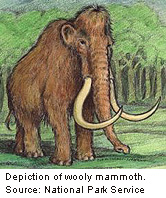
THURSDAY, Nov. 25 (HealthDay News) — Mammals began to grow much larger after dinosaurs became extinct 65 million years ago, a new study suggests.
An international team of researchers analyzed the fossils of major groups of land mammals on each continent and found that their size increased from a maximum of about 10 kilograms (22 pounds) when they shared the Earth with dinosaurs to a maximum of 17 tonnes (18.7 U.S. tons) after dinosaurs became extinct.
“Basically, the dinosaurs disappear and all of sudden there is nobody else eating the vegetation. That’s an open food source and mammals start going for it, and it’s more efficient to be an herbivore when you’re big,” study co-author Jessica Theodor, an associate professor in the biological sciences department at the University of Calgary, said in a university news release.
The findings also show that the global ecosystem is able to reset itself relatively quickly.
“You lose dinosaurs 65 million years ago, and within 25 million years the system is reset to a new maximum for the animals that are there in terms of body size. That’s actually a pretty short time frame, geologically speaking. That’s really rapid evolution,” Theodor said.
The study is published in the Nov. 25 issue of the journal Science.
More information
The Smithsonian Institution National Museum of Natural History explains how mammals evolved.

